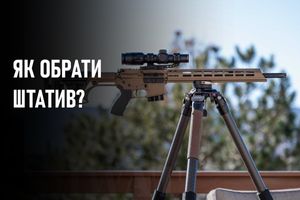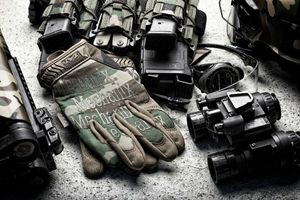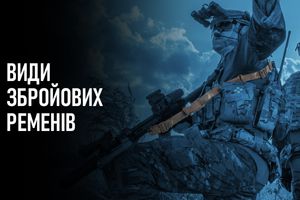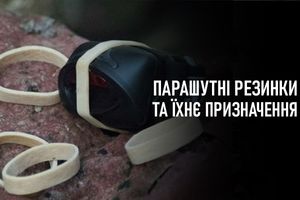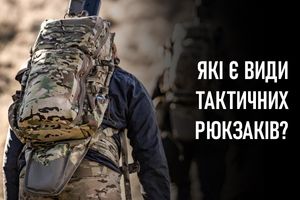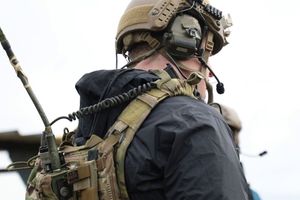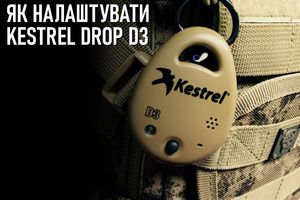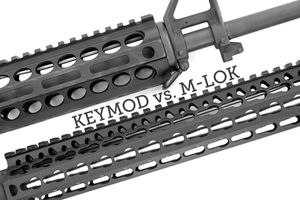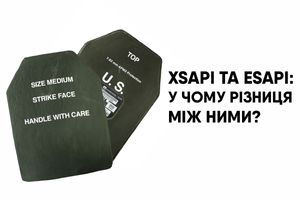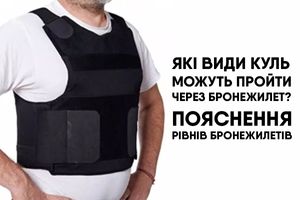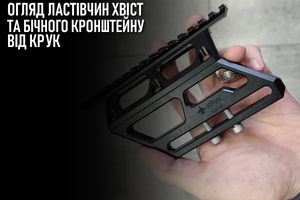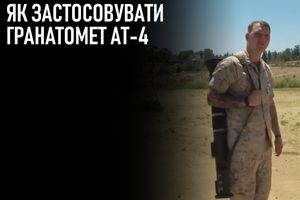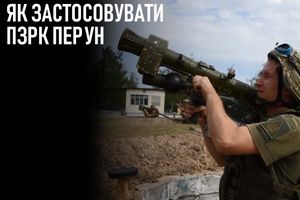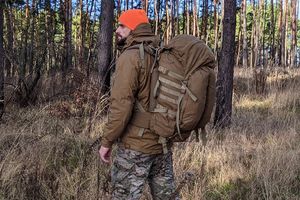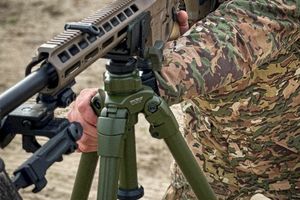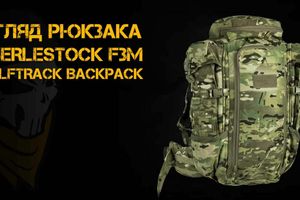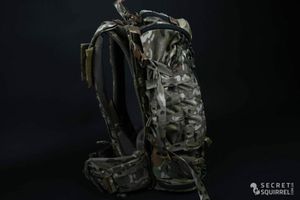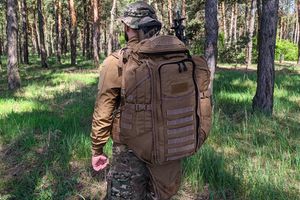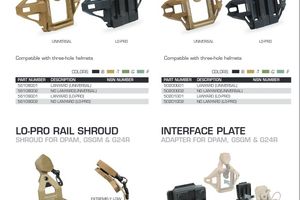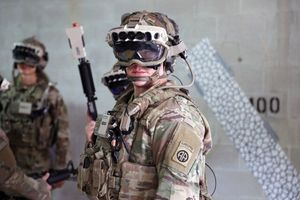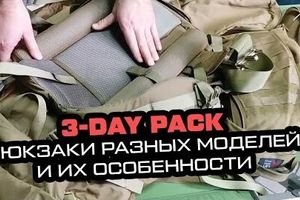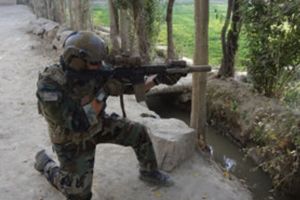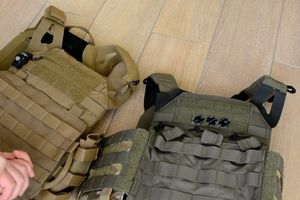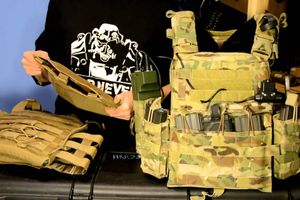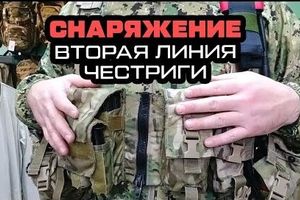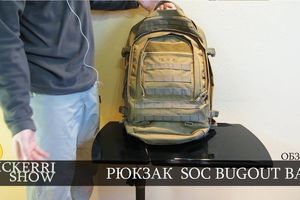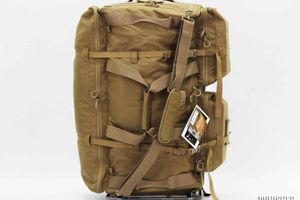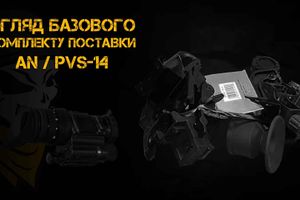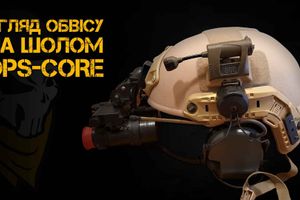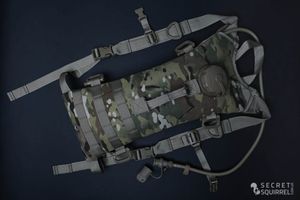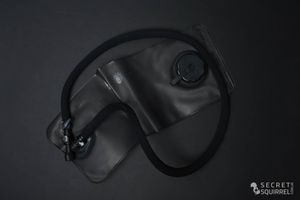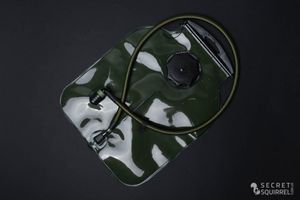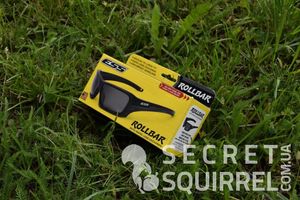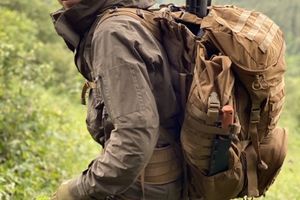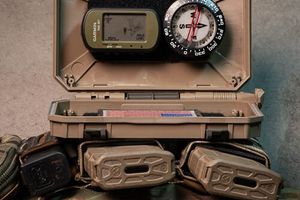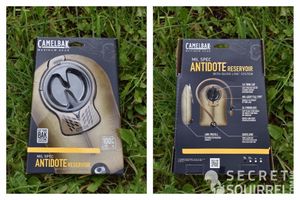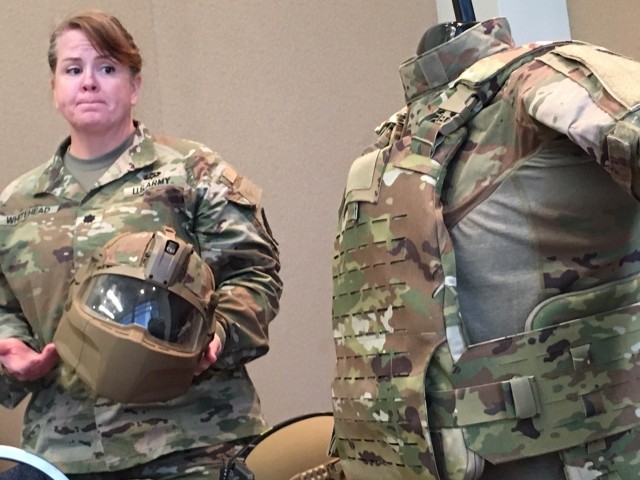 |
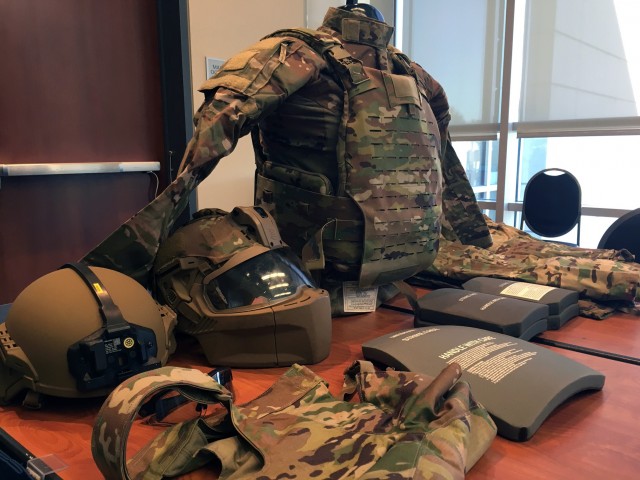 |
Less than a week after receiving his new Integrated Head Protective System, or IHPS, the neck mandible saved the Soldier's life in Afghanistan.
The armor crewman was in the turret manning his weapon when a raucous broke out on the street below. Amidst the shouting, a brick came hurdling toward his turret. It struck the Soldier's neck, but luckily he had his maxillofacial protection connected to his helmet.
The first issue of this mandible with the IHPS helmet went to an armored unit in Afghanistan a couple months ago, said Lt. Col. Ginger Whitehead, product manager for Soldier protective equipment at Program Executive Office Soldier.
The neck protection was designed specifically for turret gunners to protect them from objects thrown at them, she said. She added most Soldiers don't need and are not issued the mandible that connects to the IHPS Generation I helmet.
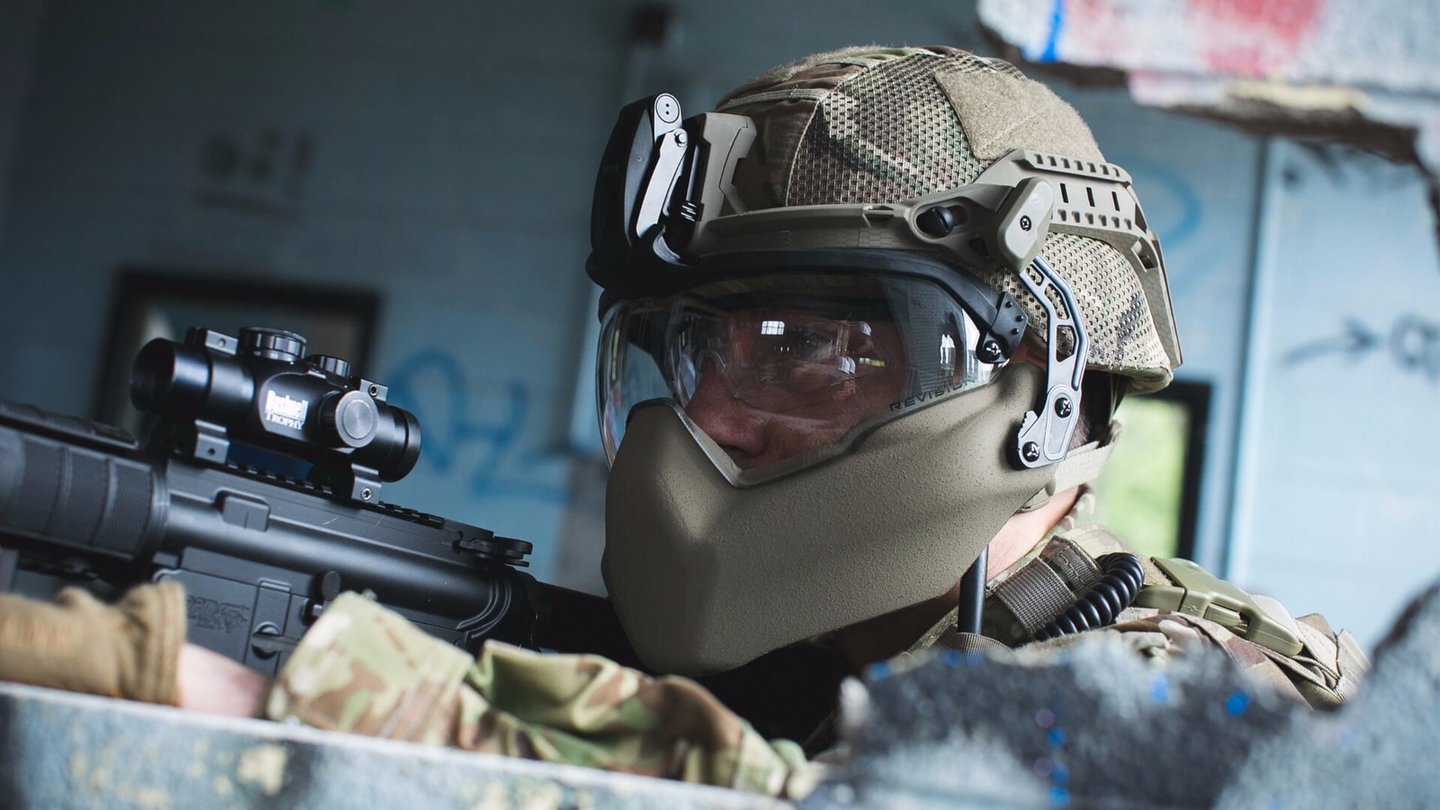
A new Gen II helmet is also now being testing by Soldiers, said Col. Stephen Thomas, program manager for Soldier protection and individual equipment at PEO Soldier.
About 150 of the Gen II IHPS helmets were recently issued to Soldiers of the 2-1 Infantry for testing at Fort Riley, Kansas. The new helmet is lighter while providing a greater level of protection, Whitehead said. The universal helmet mount eliminates the need for drilling holes for straps and thus better preserves the integrity of the carbon fiber.
The new helmet is part of an upgraded Soldier Protection System that provides more agility and maneuver capability, is lighter weight, while still providing a higher level of ballistic protection, Thomas said.
The lighter equipment will "reduce the burden on Soldiers" and be a "game-changer" downrange, Thomas said at a PEO Soldier media roundtable Tuesday during the Association of the U.S. Army Annual Meeting and Exposition.
It will allow Soldiers flexibility to scale up or scale down their personal armor protection depending on the threat and the mission, he said.
The new Soldier Protection System, or SPS, is "an integrated suite of equipment," Thomas said, that includes different-sized torso plates for a modular scalable vest that comes in eight sizes and a new ballistic combat shirt that has 12 sizes.
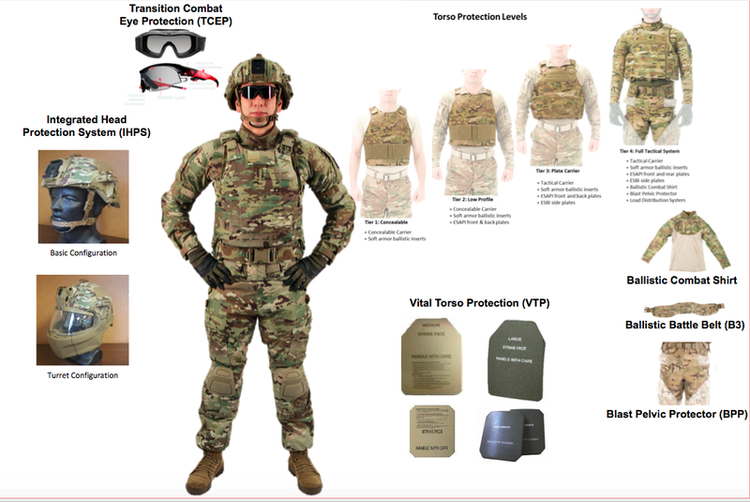
The idea is for the equipment to better fit all sizes of Soldiers, he said. The ballistic combat shirt for women has a V-notch in the back to accommodate a hair bun, Whitehead said, which will make it more comfortable for many female Soldiers.
The modular scalable vest can be broken down to a sleeveless version with a shortened plate to give an increased range of motion to vehicle drivers and others, she said.
The new SPS also moves away from protective underwear that "Soldiers didn't like at all" because of the heat and chafe, Whitehead said. Instead the new unisex design of outer armor protects the femoral arteries with less discomfort, she said.
PEO Soldier has also come out with a new integrated hot-weather clothing uniform, or IHWCU, made of advanced fibers, Thomas said. It's quick-drying with a mix of 57% nylon and 43% cotton.
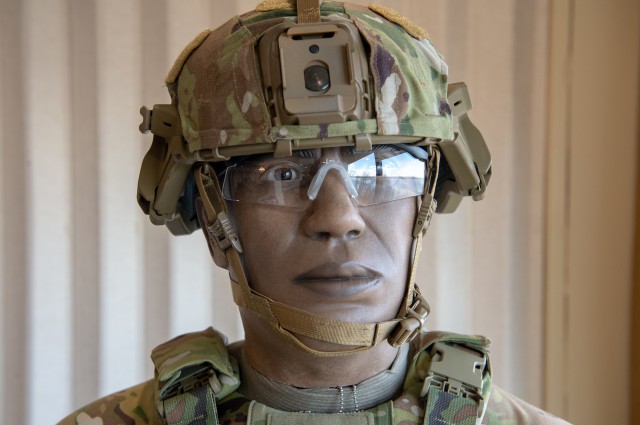 |
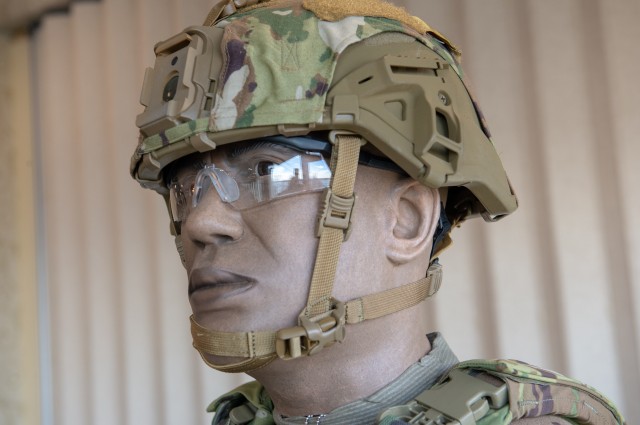 |
In hot temperatures, the uniform is "no melt, no drip," he said.
Two sets of the IHWCU are now being issued to infantry and armor Soldiers during initial-entry training, he said, along with two sets of the regular combat uniform.
The new hot-weather uniform is also now available at clothing sales stores in Hawaii, along with those on Forts Benning, Hood and Bliss, he said. All clothing sales stores should have the new uniform available by February, he added.
Source: https://www.army.mil/article/228671/new_protective_gear_saves_soldiers_life
Author: Army.Mil










































































































































